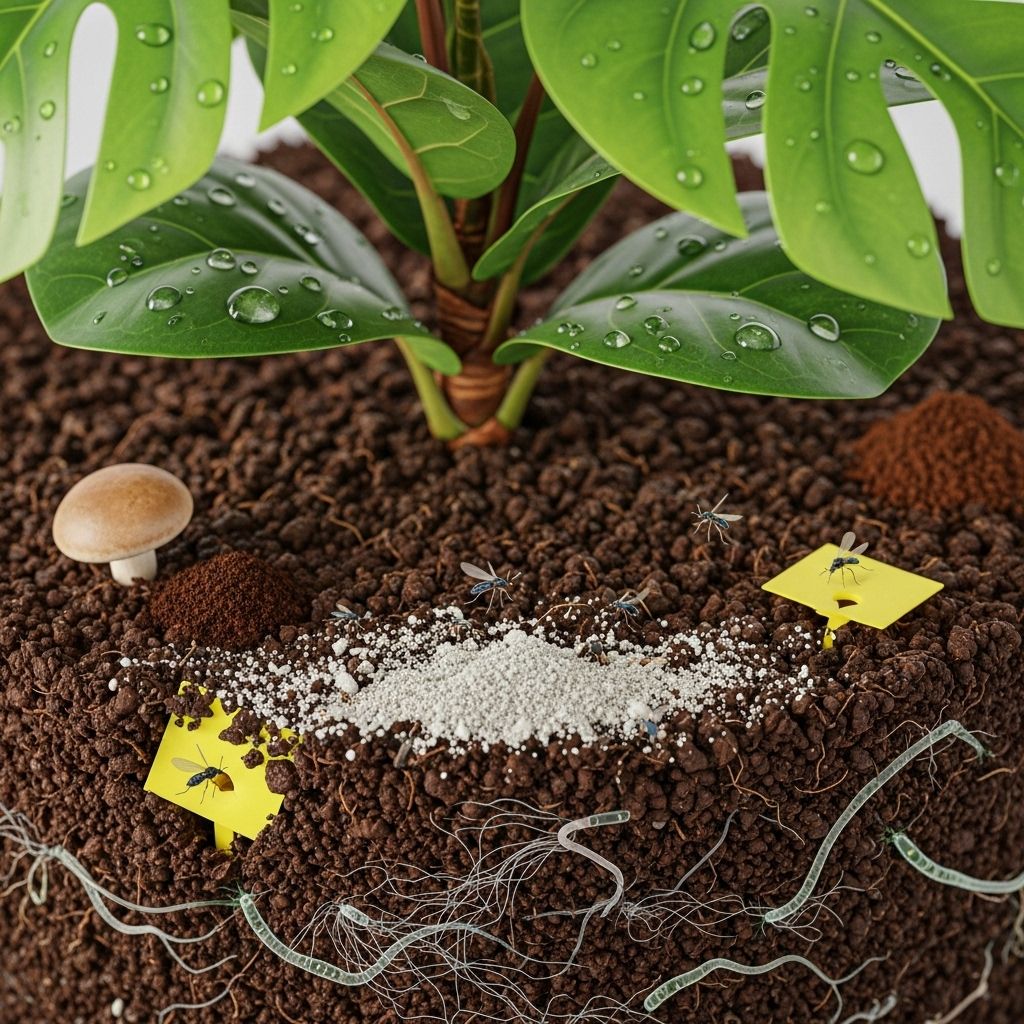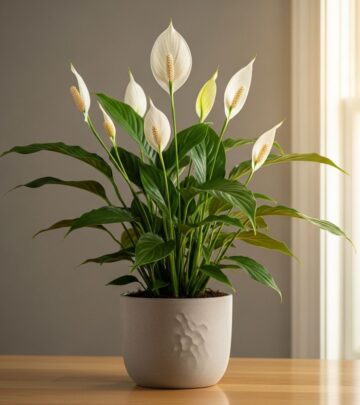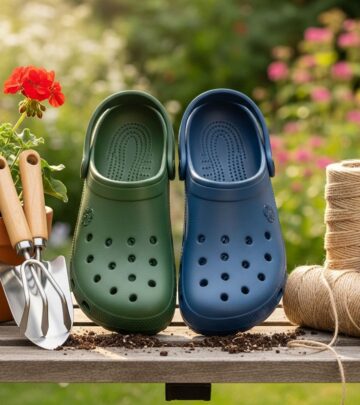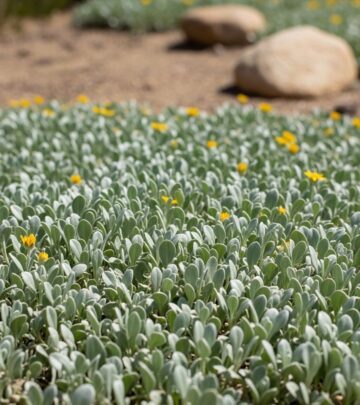How to Get Rid of Fungus Gnats Organically: An In-Depth Guide for Healthy Plants
Harness natural traps and soil remedies to protect houseplants from pests year-round.

Image: HearthJunction Design Team
If you keep houseplants or seedlings indoors, experiencing an outbreak of fungus gnats can be disheartening. These tiny flying insects multiply rapidly and can become more than just a nuisance—sometimes endangering your plants’ vitality. Fortunately, using organic, non-toxic methods, you can tackle fungus gnats effectively, protect your green companions, and restore peace to your home or greenhouse.
What Are Fungus Gnats?
Fungus gnats are delicate, mosquito-like flies belonging to the families Mycetophilidae and Sciaridae. Adult fungus gnats typically measure about 2–4 mm in length. While harmless to humans and pets, they become a problem when their larvae feed on plant roots and organic matter in moist soil, sometimes spreading plant diseases and damaging seedlings.
Identifying a Fungus Gnat Infestation
- Appearance: Adults have slender, dark bodies with long legs and wings, often mistaken for tiny mosquitoes. The larvae are translucent, worm-like, about 1/4 inch long, with black heads.
- Behavior: Adults rest or hover near the soil surface and frequently fly up in clouds when plants are watered.
- Plant Symptoms: Infested plants may wilt, exhibit stunted growth, or develop yellow leaves, especially when seedlings or young plants are attacked by larvae feeding on tender root hairs.
Understanding the Fungus Gnat Life Cycle
A successful eradication strategy starts with an understanding of the gnat life cycle:
- Egg Stage: Female adults lay up to 200–300 eggs in moist organic potting soil.
- Larval Stage: Eggs hatch into larvae within 4–6 days. Over the next two weeks, larvae feed on decaying organic matter and sometimes plant roots.
- Pupal Stage: After the larval stage, they pupate in the soil for 3–7 days.
- Adult Stage: Adults emerge, mating and laying eggs to continue the cycle.
Breaking this cycle is central to controlling fungus gnats.
The Root Causes of Fungus Gnat Infestations
Before treating the problem, know why fungus gnats appear:
- Overwatering: Continuously damp soil provides the ideal environment for gnat larvae to thrive.
- Poor Drainage: Compacted or waterlogged soils encourage fungi and organic matter breakdown, attracting gnats.
- Decaying Material: Decomposing leaves or organic debris in or on the soil support larval development.
Step-by-Step: How to Get Rid of Fungus Gnats Organically
1. Dry Out the Soil: Your First Line of Defense
Fungus gnat larvae require moist conditions. The simplest remedy is to reduce watering to allow the top inch or two of soil to dry out completely before your next watering. Dry conditions kill the larvae and make the environment unfriendly for egg-laying adults.
- Ensure pots have proper drainage holes.
- Remove water-catching trays or empty them after watering.
- Never water on a strict schedule; touch the soil first.
Be cautious—succulents and many indoor plants thrive with drier roots, but some species like ferns may need careful monitoring.
2. Use Sticky Traps to Catch Adult Gnats
Yellow (or green) sticky traps, available at garden centers or online, are a simple, non-toxic way to trap adult gnats and prevent them from laying more eggs.
- Cut sticky traps into small strips for efficiency.
- Insert traps just above the soil surface, near infested plants.
- Check and replace as needed; these traps will also help estimate the size of your gnat population.
3. Potato Slices: Trapping the Larvae
Raw potato slices serve as both a diagnostic tool and a limited trap for larvae. The larvae are attracted to the raw potato, crawl onto it, and can be removed and discarded.
- Slice potato into thick rounds or chunks about 1 inch wide.
- Place them flat on the soil surface or slightly beneath it.
- After a few hours (up to 4–8 hours), pull up the potato: it should be crawling with larvae if present.
- Dispose of the chunks outside (away from your plants).
- Repeat daily until you see a clear reduction in larvae.
Note: While useful, this method alone cannot end a heavy infestation—complement it with other strategies.
4. Target Fungus: The Gnats’ Food Source
Because fungus gnat larvae feed on fungi in the soil, reduce fungal growth to starve out the population using natural fungicides:
- Chamomile Tea: Steep a strong brew, allow it to cool fully, then dilute with four parts water. Use this to water your plants. Chamomile’s antifungal properties suppress soil fungi over time.
- Cinnamon Powder: Sprinkle real ground cinnamon over the top layer of soil. Cinnamon acts as a natural fungicide and is safe for most houseplants.
Repeat these treatments for 2–3 weeks, monitoring carefully for improvement and repeating as needed.
5. Hydrogen Peroxide Soil Drench (3% Solution)
Hydrogen peroxide (the standard 3% pharmacy solution, unscented) is a safe, effective way to kill gnat larvae in soil:
- Mix 1 part 3% hydrogen peroxide with 4 parts water.
- Thoroughly drench the soil with this solution as you would during normal watering.
- Some fizzing is expected—it is normal and harmless to the plant in low concentrations.
- Repeat weekly as needed until the infestation resolves.
Never use industrial-strength peroxide. Always dilute and use freshly mixed solution for best efficacy.
6. Biological Controls: Targeting Larvae Organically
If you need to treat persistent or large infestations, consider biological control agents. These options are non-toxic for humans, pets, and plants, but deadly to fungus gnats.
| Control Agent | Description | Application |
|---|---|---|
| Bacillus thuringiensis var. israelensis (BTi) | A bacterium used in products like Mosquito Bits/Dunks. Its toxins are deadly to gnat larvae. | Sprinkle granules on soil and water in, or mix and drench soil per product instructions. |
| Beneficial Nematodes (Steinernema feltiae) | Microscopic worms that hunt and kill gnat larvae without harming plants or people. | Mix with water and apply to soil as indicated. |
| Predatory Mites / Rove Beetles | Commercially available predators that eat gnat larvae in the soil. | Release in affected areas for ongoing control. |
These agents generally require repeated applications for long-term effectiveness and can be ordered online or found at specialty garden stores.
7. Prevention: Keep Fungus Gnats Away
- Avoid Overwatering: Always let the soil partially dry between waterings.
- Improve Drainage: Use well-draining soils and pots with adequate holes.
- Remove Debris: Gently brush aside dead leaves or organic matter from the soil to limit attractants.
- Sterilize Soil: For valuable or sensitive plant collections, consider sterilizing new potting mixes with gentle heat (solarization) before use.
- Quarantine New Plants: Isolate new houseplants for up to two weeks before integrating them with others to avoid spreading pests.
8. Emergency Chemical Control: What to Know
Use chemical pesticides only as a last resort. Most home infestations can be managed organically, but severe or commercial outbreaks may require short-term use of pyrethrins or specific pest-control insecticides. These should be used directly on the soil, never as a spray in the air, and always according to the product label. Always prioritize organic, non-toxic strategies first.
Common Mistakes and What to Avoid
- Trying to spray airborne, adult gnats with insecticides—this is ineffective and unsafe for indoor air.
- Overwatering after a drench treatment—this can restart an outbreak.
- Ignoring the infestation or treating only adults—larvae in soil will keep the cycle going.
Frequently Asked Questions (FAQs)
Are fungus gnats harmful to my houseplants?
Adult gnats are mostly harmless, but their larvae can damage roots, stunt growth, and spread disease, especially in young seedlings and delicate plants.
Can fungus gnats harm humans, pets, or spread to food?
Fungus gnats do not bite or transmit diseases to humans or pets and do not infest foodstuffs. Their main nuisance is their swarming behavior around houseplants.
How quickly can I get rid of a fungus gnat infestation?
Results can be seen in as little as a week with diligent treatment, but complete eradication usually takes 2–4 weeks, depending on severity and control methods used.
Which method is best for organic control?
For most indoor gardeners, a combined approach—including drying out soil, using sticky traps, and applying natural controls like hydrogen peroxide or BTi—provides the best results.
Will repotting the plant help?
In severe cases, removing a plant from infested soil, cleaning its roots gently, and replanting it in sterile, fresh potting mix may be the fastest solution.
Can I prevent fungus gnats from returning?
Yes. Adopting better watering habits, using clean potting mixes, and monitoring new plant arrivals greatly reduce future outbreaks.
Quick Reference Table: Organic Fungus Gnat Control Methods
| Method | Targets | Time to Results |
|---|---|---|
| Drying Soil | Larvae & Eggs | 1 week |
| Sticky Traps | Adults | Immediate (captures adults) |
| Potato Slices | Larvae (for detection/limited reduction) | 24–48 hours, ongoing monitoring |
| Cinnamon/Chamomile/BTi/Nematodes | Fungus & Larvae | 7–21 days (repeated treatment) |
| Hydrogen Peroxide Drench | Larvae | 1–7 days |
Final Tips for a Gnat-Free Indoor Garden
- Adopt a holistic approach—combine several organic methods for best results.
- Monitor your progress and adapt your plan if the infestation persists.
- Keep soil dry, clean, and use sticky traps as preventative maintenance even after the infestation ends.
- Educate household members to avoid overwatering or crowding plants in poorly vented spaces.
By following these proven organic strategies, you can protect your houseplants, seedlings, or greenhouse crops from the relentless annoyance and potential harm of fungus gnats—without risking your family’s health or the environment.
References
- https://ipm.ucanr.edu/PMG/PESTNOTES/pn7448.html
- https://www.learningwithexperts.com/blogs/articles/weapons-of-gnat-destruction-the-ultimate-guide-to-killing-fungus-gnats
- https://www.youtube.com/watch?v=LtqoAr2hX3Y
- https://www.lovethatleaf.co.nz/blogs/plant-care-guides/easy-method-kill-fungus-gnats-indoor-plants
- https://www.oliveandjunehome.com/blog/how-to-get-rid-of-fungus-gnats-houseplants
Read full bio of Srija Burman












